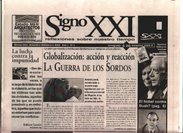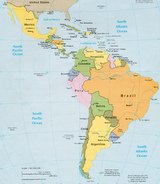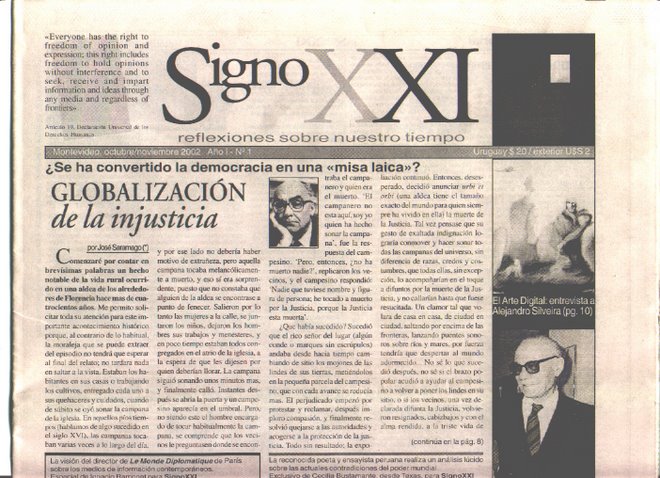 | By Robert Deutsch, USA TODAY | |
| Brooklyn street proves yes, we all can get along |
| |||||||||||||||||||||||||||||||
That's what Brooklyn College sociologist Jerry Krase wonders as he rides the B68 bus along this 5-mile commercial strip, which is populated at various stops by pockets of West Indians, Latinos, Pakistanis, Indians, Orthodox Jews, Chinese, Russians, Israelis and Ukrainians.
How do so many different kinds of people live so closely yet so peacefully?
As the bus moves south from Prospect Park toward Brighton Beach, the store signs change from English to Arabic to Hebrew to Chinese to Cyrillic. Bearded ultra-Orthodox Jewish men in black coats and fedoras share the sidewalks and store aisles with veiled Muslim girls and sari-clad Hindu women.
At Glenwood Road, a Moldavian Jew and a Pakistani Muslim cut hair at adjacent barbershop chairs. At Avenue I, a Muslim grocer boasts that a third of his goods are kosher. At Avenue R, Tayba Islamic Center sits next door to Chabad Jewish Center.
Elsewhere in the world, some of these people — Muslims and Jews, Russians and Ukrainians, Pakistanis and Indians — are at each others' throats. Here, Krase says, "They grasp it almost immediately: This is not the place for that."
It's not just Coney Island Avenue; it's America, says Philip Kasinitz, associate director of the City University of New York Center for Urban Research. For every gated community that segregates groups of people, he says, there's a neighborhood that integrates them at a subway stop or shopping strip. "Big cities, and some suburbs, are quite good at it," he says, "and New York is better at it than most."
Coney Island Avenue isn't the Champs-Élysées. It's noisy, busy, homely: a street of car washes, auto body shops, electronics stores, health clinics and storefronts that traffic in phone cards, discount travel, international money transfers, cellphones, insurance.
There is variety in dining, from Tzar Boris ("Russian Noble Food") to Thai Aroma, El Alamo, Casa Italia (kosher Italian) and HFC, which sells halal fried chicken, pizza and bagels across the same counter.
There's a Walgreens and a Staples and not much else in the way of name-brand retail shopping. The avenue is not even mentioned in the mammoth AIA Guide to New York City. "Architecturally, historically, it really has nothing to point to," says Brooklyn historian Ron Schweiger, "except for its ethnic diversity."
That, and its tranquility in a crowded, abrasive city where almost anything — a car accident, a slight, a fight — can turn into something bigger — a demonstration, a boycott, a riot.
Heading off a crisis
Consider what almost happened before Halloween, in an Orthodox Jewish neighborhood where many Pakistani Muslims work.
A 24-year-old Pakistani, Shahid Amber, was eating an ice cream cone outside a Dunkin' Donuts when he was approached by a group of Orthodox Jewish kids.
Amber later told police that the boys surrounded him and taunted him as a "terrorist." One kid spit on him. Another knocked the cone from his hand. Someone slugged him with brass knuckles, breaking his nose. When he hit the ground the group kicked him, telling him to go back to his country and not to "mess around with Jews."
Based on other racial and ethnic conflicts that have split the borough, it's easy to imagine what could have happened next: The incident would become a cause and play out for weeks in the media as activists and politicians advanced their own agendas.
This neighborhood would seem particularly susceptible to such passions. Brooklyn was the birthplace of the militant Jewish Defense League, which the FBI has described as a terrorist organization. Pakistanis already felt victimized by the government's post-9/11 immigration crackdown.
"I thought, 'Oh, my God! This could be the worst!" says Mohammed Razvi, a Pakistani community leader. Rabbi Robert Kaplan, an Orthodox Jew, agreed: "It had potential to explode."
But when journalists arrived on Coney Island Avenue they found Muslim and Jewish leaders standing together. They said that the attack was deplorable; that it should be resolved in court, not the street or the media; that it was an aberration and did not reflect underlying tensions between the groups.
They pointed out that the Dunkin' Donuts was owned by a Pakistani Muslim who operated under a rabbi's kosher supervision, and that Jews and Muslims usually mixed there without incident. The alleged attackers "were just some troubled kids," Razvi said.
Four youths were indicted on gang assault charges and are awaiting trial.
When the Washington-based Council on American-Islamic Relations issued a statement linking the case to a national pattern of attacks on Muslims and urging a federal investigation, Razvi demurred.
What is the formula?
"Some national organizations have an agenda," he says. "They wanted to make a big thing of it, but our relationships in the community were tight. We made sure the spark didn't turn into a fire. … We were not going to let this turn us against each other."
Voice of America, the U.S. government's overseas broadcast service, has suggested that the many different people of Coney Island Avenue get along so well that the avenue may hold a "formula for peace on Earth."
But what is the formula? What is it about Coney Island Avenue?
What follows, based on separate interviews with USA TODAY, is a sort of virtual street corner discussion on just that question.
•Professor Jerome Krase: They must get along
Krase first noticed the avenue's ethnic tapestry as he rode the B68 bus to work. He could tell where he was by who got off and on: Pakistanis and Indians at Foster Avenue, Orthodox Jews at Avenue J, Russians at Avenue S, Chinese at Avenue U, Ukrainians at Brighton Beach Avenue.
His theory: "The immigrants who live here get along not because they want to, but because they have to. It's not that they like each other, necessarily. … But they've learned to live with each other, because in order to get what you want here — education, economic prosperity, security, a decent place to live — you must live in cooperation with other people."
The bus is a metaphor: "They need to get from one place to another. To do that they all have to ride the same bus. If they fight, the bus won't move. But I almost don't want to say too loudly that this is going on, like it's bad luck. … Once you start bringing attention to this, it's almost like inviting someone to prove you're wrong. It's a challenge to people who think Jews shouldn't have anything to do with Muslims."
•Mohammed "Moe" Razvi: A chance to meet
Two decades ago Razvi's father opened one of the first Pakistani groceries on Coney Island Avenue. Razvi, 36, started a community social services center that offers immigrants classes in English and computers and legal help.
His theory: "Professor Krase says we get along because we have to, but I think we get along because we can. It's that for the first time we have the chance to.
"We come from countries where we don't see each other. In Pakistan, for example, you don't see Jewish individuals. You just hear about them. Here you see them coming into your store. And you find you have the same problems as other kinds of people — learning English, immigration issues."
He says the surest sign of community solidarity is that after 9/11 and the U.S. invasion of Iraq, there were no hate crimes against Muslims in the neighborhood. "We said, 'Outside events and controversies should not affect us here.' "
•Rabbi Robert Kaplan: Hard work
Kaplan, an Orthodox Jew, has lived for the past 25 years on one of the shady residential streets that parallel Coney Island Avenue.
His theory: People get along because their community leaders put in "a lot of hard work. We choose issues to work on together, like health care, so we can learn to solve problems and share and get beyond the kind of stuff that is causing trouble elsewhere. So when crises do come here, we have trust to fall back on."
He says it paid off after the 9/11 attacks. "We were going to war with a lot of people who looked like folks in our community. We were afraid it was going to play out here. … We wanted to make a statement. We all don't agree on what's happening in the Middle East, but we agreed we want to live together in Brooklyn."
•Natasha Berlin: Business
Berlin was born in the Soviet Union 38 years ago and grew up in Israel before immigrating to the USA in the mid-1990s.
She recently opened a day care center whose children include Orthodox Jews, Russians, Poles and Hispanics — "international day care," she calls it.
She does not take for granted the peace on Coney Island Avenue; her two years in the Israeli army coincided with the Palestinian uprising known as the intifada.
Her theory: "People get along here because everyone works strictly on business and not on politics or religion. Here we are not Jewish and Muslim and Christian. … We're living friendly together because we're talking strictly about business and not about where we've come from.
"It's not Chinese buying only from Chinese stores. If you like the price, you come in and buy. That's how it goes here. They like the day care. They like the price. They like how we take care of the kids. So they sign up. It doesn't matter who you are and what you are."
The day care center is next door to a mosque. Is she concerned? "We're doing our thing, they're doing their thing, everything is fine. We say hello."
•Yakov Semichan: Nothing to fight about
The old barber shop marquee says "Al's," but a sign in the window announces, "We speak English/Russian/Yiddish & Urdu."
The owner is a 63-year-old Moldovan immigrant who bought the shop in 1991. A few years later, Semichan found that his Russian and Jewish customers on the block were being replaced by Pakistani Muslims who patronized barbers of their own kind.
So he took in a Pakistani barber. For the past three years that's been Zufigar Ali Khan, 48. Semichan's theory: People don't fight because there's nothing to fight about.
"People are looking for a better life for their family. Why fight? If you (are) nice to people, people (are) nice to you. It's what's inside people that matters. Russian hair, Pakistani hair, it's all hair. Hair is hair."
Customers have their own theories. "It's the culture," says Hussain Ejaz, 33, the man whose hair Kahn is trimming. "If nobody else is fighting, why you gonna fight? People come here and they see people living in peace. They want to do the same thing."
•Ahsan Chughtai and Mohsin Zaheer: Too scared — or too busy
The blocks of Coney Island Avenue between Foster Avenue and Avenue H form the heart of the city's largest Pakistani community. After 9/11, when the government increased surveillance of Muslim immigrants, many Pakistanis fled the area. Many businesses closed.
The weekly community newspaper Sada-e-Pakistan has lost about 40% of its pre-9/11 advertising business.
Chughtai, the publisher, says issues such as the Dunkin' Donuts beating or the opening of a Russian-owned liquor store near a mosque don't arouse much protest because Pakistanis are afraid.
"This (Pakistani) community is petrified of coming out to protest, of having any fingers pointed. They don't want any more heat on them after what happened after 9/11.
"That's why you don't see any Pakistani flags on the street. They're all American flags, to show we're loyal."
Zaheer, the editor, has a different take:
"People are so occupied with work that they don't have the time to fight. The average (Pakistani) person works seven days, 10 to 12 hours a day. The rest, perhaps 20%, work six days. They don't have time to hang around, to adopt bad habits."
-------------------------------------------------
Ir al Sitio principal Escritos críticos / Ensayos
www.majfud.50megs.com
Reflexiones sobre nuestro tiempo
-------------------------------------------------






No hay comentarios.:
Publicar un comentario